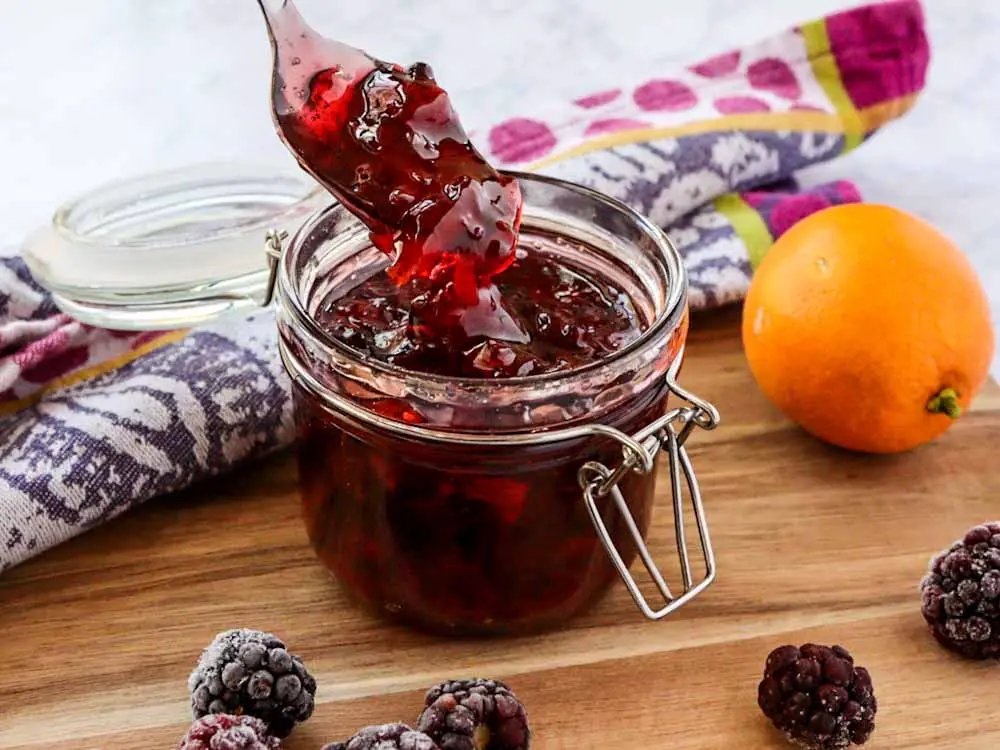
My little potted blood orange tree was completely covered in oranges this winter. Whenever blood oranges are in season I find myself putting them in just about everything…and having my own homegrown fruit is the perfect excuse to make this marmalade.
Blackberries are another easy-to-grow-at-home fruit. Thankfully they freeze well, so it’s no problem that blackberries are picked in summer and citrus ripens in winter. This marmalade is a perfect use for any blackberries – even those that aren’t the sweetest (as often happens with berries you buy at the store).
Even home-grown blackberries can sometimes turn out tart. Check out Why are my Blackberries Sour? Tips to Grow Sweeter Berries to learn how you can grow the sweetest blackberries possible.
Marmalade is really just a sweet jam made from the peels and fruit of citrus. The best marmalade has a balance of sweet, tart, and bitter – from the little bits of white pith that make it into the pot. There are some recipes that even use the whole fruit. I’ve chosen to remove as much of the pith as possible to minimize the bitterness, but it’s still present.
The addition of the blackberry makes the final marmalade a beautiful dark red – just like the inside of blood oranges. And blackberries bring out the tart, berry notes of the blood orange. But the orange is the real hero flavor.
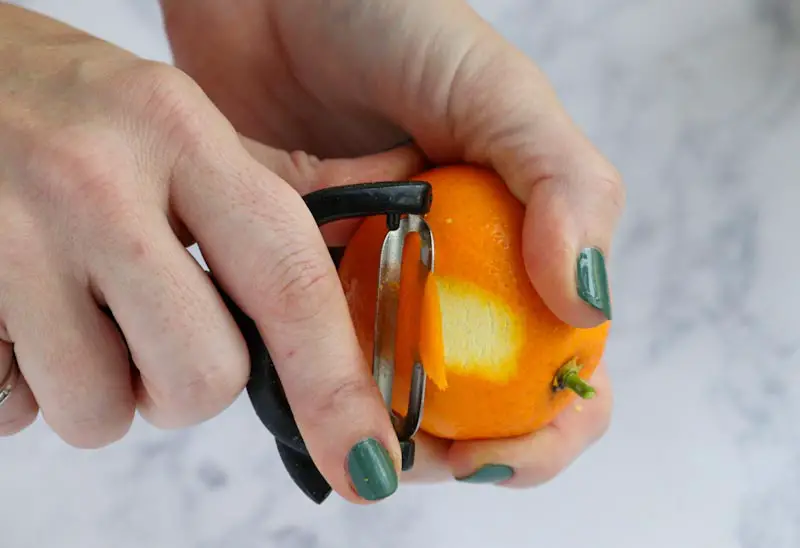
Fresh-picked oranges have much thinner skin that storebought citrus, so be careful when peeling the fruit. Use a small paring knife to remove as much of the white pith from the peels as you can so that the marmalade isn’t too bitter.
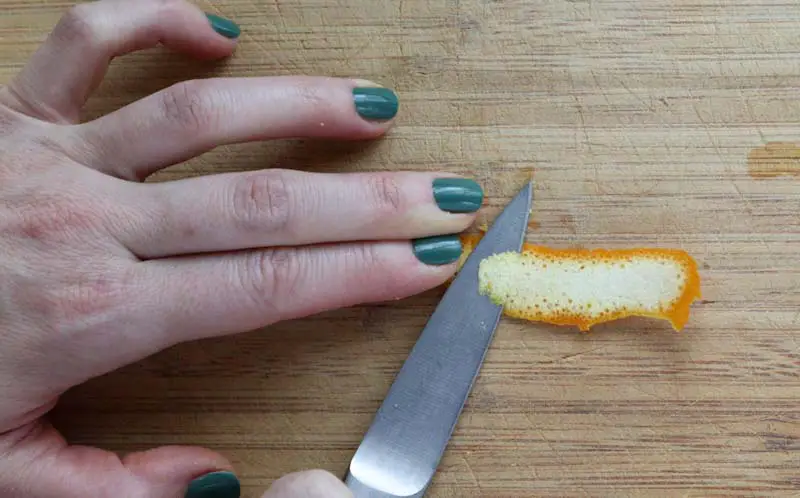
Same thing with the peeled oranges – carefully cut off any remaining pith. Then just roughly chop the peeled blood orange into pieces – don’t worry about sectioning the fruit.
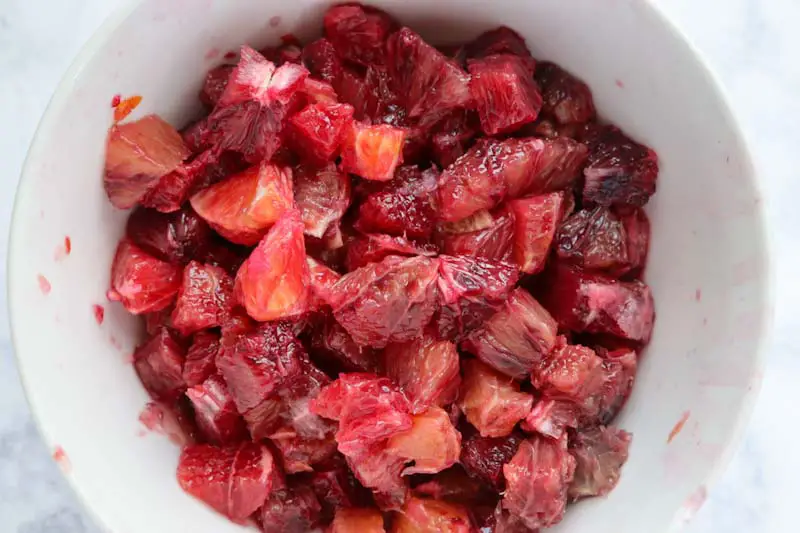
Take the now pith-free peels and chop them into little strips. Add them to the water in a pot, and simmer for about 5 minutes, or until they start to get a little soft.
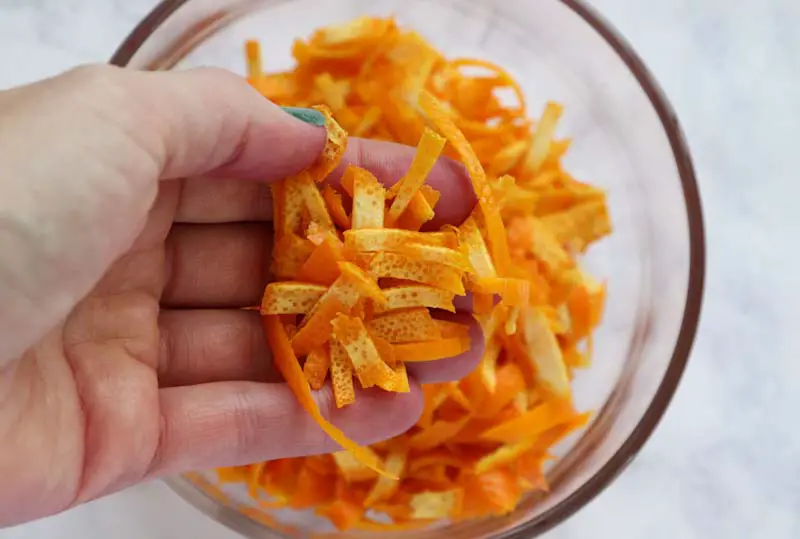
Then just add in the rest of the ingredients – the blood orange pieces, blackberries, lemon zest and juice, and sugar, and bring the whole mix back to a boil. You can use fresh blackberries in this recipe, but this is the perfect way to use up last season’s frozen berries.
Learn more: Freezing Blackberries: The Best Ways to Do It
Leave the mixture to simmer for about 45 minutes to an hour. Check to see if the marmalade is thick enough by scooping out a little onto a chilled bowl or plate. Tilt the bowl – if the marmalade looks more viscous and not too liquid-y, then it’s ready.
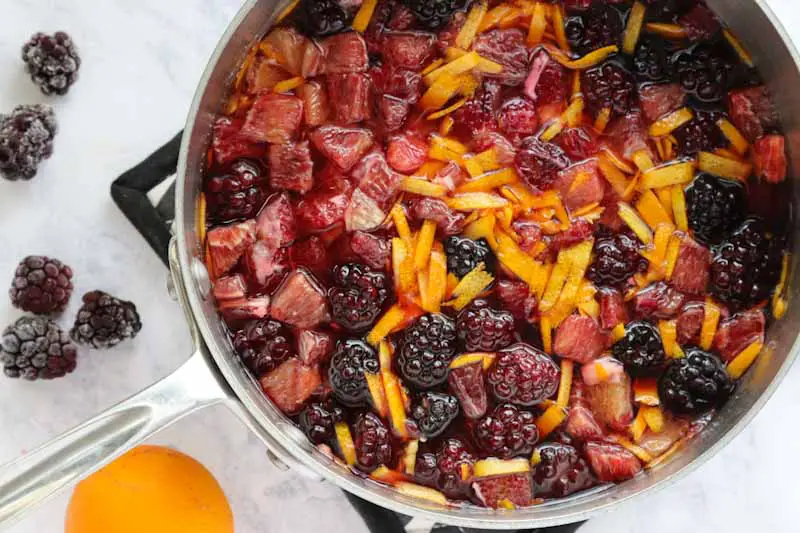
My favorite way to eat this is on fresh crusty bread with butter or cream cheese. Or warm it up and use it as a topping for ice cream. Or stir the marmalade into your favorite basic muffin batter and bake. Or, use it in my simple Sticky Orange Marmalade Chicken Stir-Fry. Or maybe just scoop it up and eat it with a spoon.
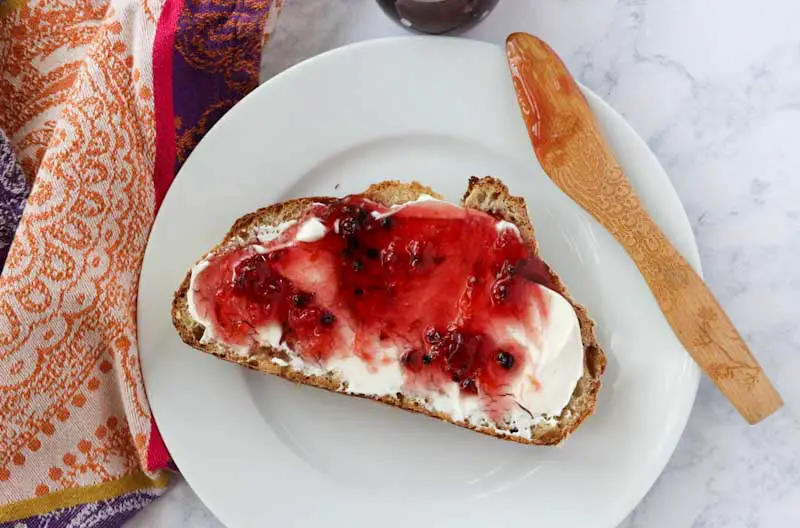
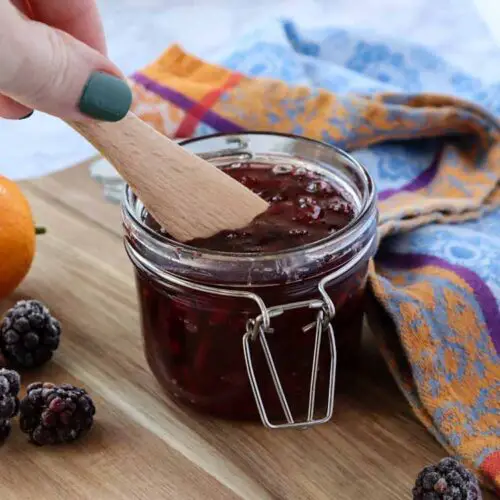
Blackberry Blood Orange Marmalade
Equipment
- Vegetable peeler
- Saucepan
Ingredients
- 6 blood oranges about 670 g
- 4 cups (800 g) sugar
- 2 cups (500 ml) water
- Zest and juice of 1 small lemon
- 6 oz. 170 g, about 1 ½ cups blackberries fresh or frozen
Instructions
- Place 2 or 3 small bowls or plates in the freezer.
- Using a vegetable peeler or sharp paring knife, peel the blood oranges. Use a paring knife to remove as much of the white pith as possible.
- Thinly slice or julienne the orange peels.
- Remove the white pith from the oranges. Chop the blood oranges coarsely (into roughly 1/2-inch pieces), removing seeds as you come across them. There should be about 2 cups of diced orange (about 360 grams).
- Place the finely sliced peels into a saucepan with the water. Bring to a boil and simmer until the peels are slightly softened, about 5 minutes.
- Add the orange pieces, blackberries, lemon zest and juice, and sugar to the pan with the peels. Bring to a boil, then lower the heat to medium and simmer for 45 minutes to an hour. You can tell the marmalade is ready when you spoon some into one of the chilled bowls or plates. The warm marmalade should be slightly thickened and less runny.
- To preserve the marmalade: Sterilize at least 4 half-pint jars and their lids in boiling water for 10 minutes (add 1 minute per 1000 feet above sea level elevation). Remove the hot jars with tongs and place upside down on a clean towel. When the marmalade is ready, flip the jars over and carefully spoon the marmalade into the jars, without touching the inside of the jars or lids. Screw on the lids until barely tightened, then boil the filled jars for 5 minutes (10 if at a high elevation) in a pot of water that covers them by at least an inch. (Visit the National Center for Home Food Preservation website for more info on safe canning methods.)
TIPS
- If you want a smoother texture, remove the blood orange peels from the water after softening them. Add the sugar, orange pieces, lemon zest and juice, and blackberries to the water and either puree the mixture with an immersion blender, or carefully pour the mixture into a regular blender and puree. Then put the mixture back in the saucepan, add in the softened peels, and continue to cook as directed.
- If you don’t want blackberry seeds in the final marmalade, you can puree and strain the blackberries first. I like to make unsweetened blackberry puree with some of my fresh-picked blackberries and freeze it in ice cube trays. Then just add a few frozen cubes to the marmalade mixture and cook as described.
- I find that taking the marmalade out of the refrigerator about 15 minutes before I plan to use it makes it easier to spread.

